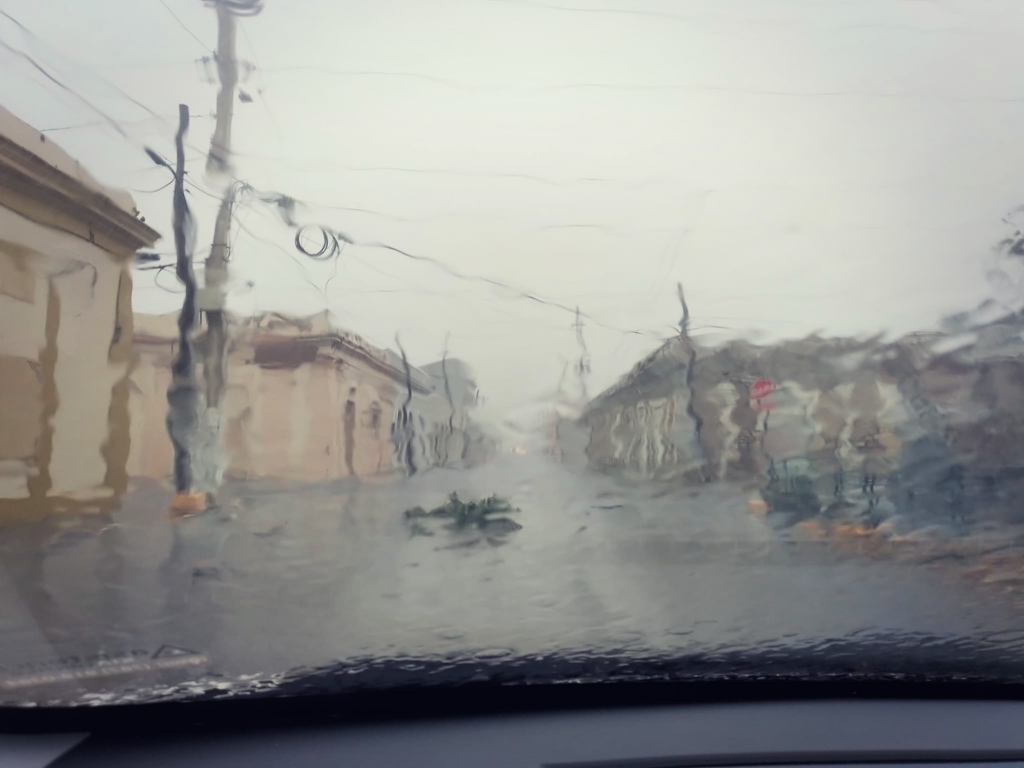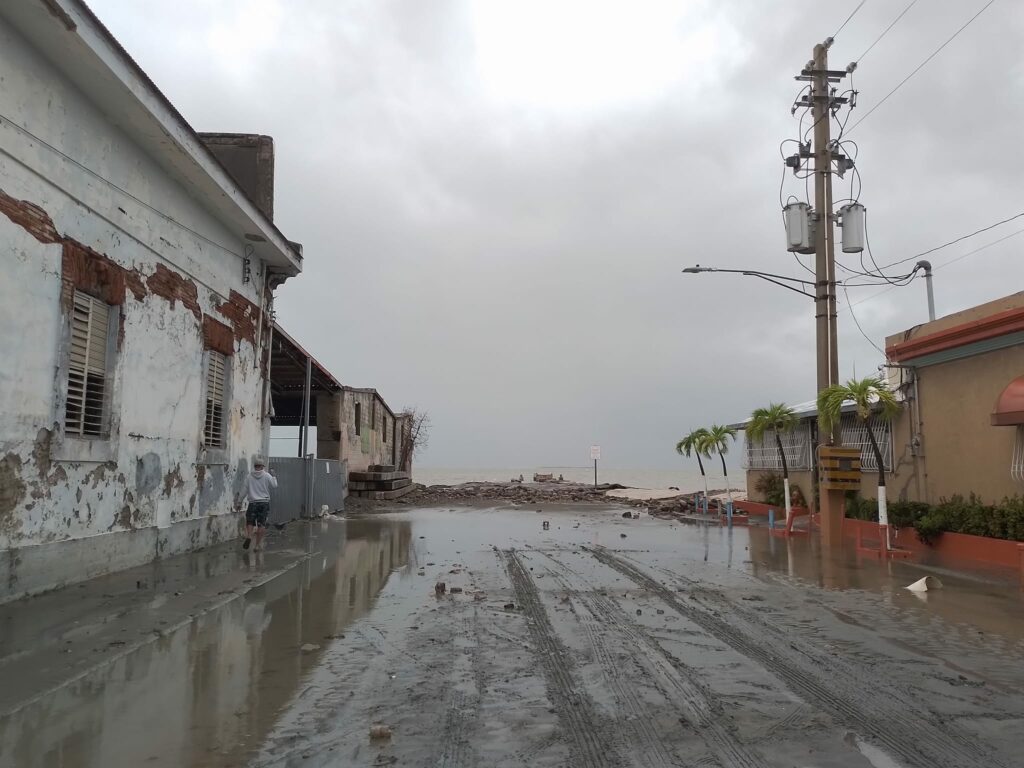Newsletter: Island-Wide Blackout Confirms the Failure of LUMA, the Newly Privatized Electric Utility in Puerto Rico

More than a week after a hurricane hit the American territory of Puerto Rico, 750,000 customers are still lacking service. The reason is not only the hurricane’s wind and rain: though it packed a lot of precipitation, Fiona was a relatively weak, Category One storm. The primary culprit is the island’s system of privatized electricity, which values profits over service. LUMA Energy, which took over operation of the territorial electricity grid 18 months ago, has failed to make the investments necessary to avoid a repeat of what happened after Hurricane Maria in 2017. That disaster sticks in mainland memory due to an embarrassing video of President Trump coming to the rescue of desperate people by tossing them rolls of paper towels.
Island officials say it could be several more days before LUMA customers see power fully restored. Worse still, an estimated one-third of Puerto Rican households are still without clean running water after the storm flooded water filtration and sewage treatment plants. The rain was downright biblical in scale. National Guard Brig. Gen. Narciso Cruz said, “There were communities that flooded in this storm that didn’t flood under Maria. I’ve never seen anything like it.” Parts of Puerto Rico received more than 25 inches of rain, breaking a record set in 1985 by Tropical Storm Isabel. There is little doubt that the intensity of the rain is attributable to global warming. Hotter ocean and atmospheric temperatures increase both evaporation and humidity levels, leading to more rain.

In the absence of timely territorial and federal relief, community-based organizations in Puerto Rico have filled the gap. One of them, a non-profit in the city of Ponce called Un Nuevo Amanecer (“A New Dawn”), and a member of Anthropocene Alliance, has rushed to provide organizational, clean-up and other services. Formed in 2017 in the wake of the destruction caused by Hurricanes Irma and Maria, the group focuses on the locality of Playa del Ponce, two-thirds of whose residents live in poverty. One of its volunteer leaders is David Southgate, who told me about his concern that “catastrophic homelessness” would be one of the main consequences of the storm. He added:
“Much of our barrio’s losses could have been prevented with good planning, equitable infrastructure investment, and effective interagency and inter-jurisdictional governance. We’ve been awarded funds to plan and receive technical assistance, but it’s all been enmeshed in bureaucracy.”
Southgate explained that there is no clarity about who exactly oversees clearing the canals and rivers. “All the storm drains in our barrios flooded because they haven’t been maintained and are full of dirt and debris.”

The widespread power outage has fanned flames of outrage over the management of the island’s power grid. Anger has been directed in particular at Governor Pedro Pierluisi and even more, at LUMA Energy. A joint venture between the Canadian utility holding company ATCO and Houston-based firm Quanta Services, LUMA was chosen by the government-owned Puerto Rico Public-Private Partnerships Authority to manage the grid in June 2020. It was a move that some have described as a prime example of “disaster capitalism”, invoking the term coined by journalist Naomi Klein in her 2007 book The Shock Doctrine: The Rise of Disaster Capitalism. Klein explained disaster capitalism as the exploitation of crises by government agencies and corporations to privatize public services and exploit them for maximum profit. The consequence is increased inequality, poverty, displacement, illness, and early death. In the case of Puerto Rico, the worst impacts of Fiona are being felt by the poor; the island’s wealthier residents have access to electric generators or else have been able to install solar panels to get off the grid.
The newly privatized system is no better and arguably worse than the old and corrupt public utility. And it’s more expensive. Rates have gone up five times since LUMA took over operations, including a 17.1 percent rise in July. LUMA has attempted to justify its rate increases by blaming the previous, government-owned utility, Puerto Rico Electric Power Authority (PREPA), for lack of investment in maintenance as well as slow disbursement of federal disaster aid. In fact, LUMA’s failures eclipse those of its predecessor, and were entirely predictable. In order to maximize profits, the company is operating with just 60% of the previous workforce. Rolling blackouts occurred within weeks of the takeover.
Questions about how much of the estimated $9.6 billion authorized by the Federal Emergency Management Agency (FEMA) to rebuild the island’s grid since its collapse in 2017 has been spent on improvements have continued to loom over Puerto Rico, like one of Hurricane Fiona’s black clouds. All accounts indicate that only a small fraction has been dispersed. In the meanwhile, residents suffer both power outages and the highest electric rates in the U.S. The best solution to the crisis in Puerto Rico is public investment in a new, more hurricane resistant and sustainable electricity generating system, and the return of the electric industry to public hands.
U.S. Rep. Alexandria Ocasio-Cortez (D-NY), who is herself of Puerto Rican heritage, wrote a letter to FEMA last year in which she asserted that the territory’s energy plans were too focused on fossil fuels at the expense of the renewable energy sources that would make Puerto Rico more resilient to natural disasters. Recently she tweeted:
“More than 4 years after Maria and Irma wiped out power for 70% of the Island, the grid was still extremely vulnerable to natural disasters. This weekend’s infrastructure failure was tragically predictable.”
Ocasio-Cortez went on to note that much of the existing energy infrastructure in Puerto Rico is in flood-prone areas at risk from sea-level rise, storm surges, and other flood risks. She also cited the long transmission lines from fossil fuel plants in southern Puerto Rico to demand centers in the north, explaining how these leave Puerto Rico’s power system “exceptionally vulnerable to natural disasters.” Currently, only about 2.5% of the island’s energy comes from sustainable sources. Puerto Rico Electric and Power (the utility that regulates LUMA) has pledged that 40% of electricity will come from renewables by 2025. It is very unlikely to fulfill its pledge. AOC added:
“We can help Puerto Rico’s economy and [reduce its] vulnerability to climate change by building a reliable, sustainable grid that will create thousands of jobs. We must break the vicious cycle of rebuilding vulnerable fossil fuel infrastructure.”

In the meanwhile, Puerto Rico remains an object lesson in how climate change, combined with disaster capitalism, continues to render poor and exploited nations, states and territories vulnerable to flooding, homelessness, and poverty. Change will require a combination of grassroots organizing —l ike that undertaken by David Southgate and Un Nuevo Amanecer — political pressure from progressives in Washington, and the global movement for environmental justice. As we await the impact of Hurricane Ian, we can only hope the failures of political and business leaders in Puerto Rico are not repeated in the north.
To contribute to our member-led mutual aid fund providing support to three A2 members in Puerto Rico, please visit here.
This essay is a slightly revised version of the one originally published in Counterpunch..
Greg M. Schwartz is a widely published investigative reporter who focuses on environmental abuses, public and private corruption, and rock and roll. He is currently an embedded reporter for Anthropocene Alliance. He can be reached at: greg.m.schwartz@gmail.com.
To receive future newsletters, please visit here.
Newsletter Sign Up
Don’t miss any of our newsletters! Click the button to sign up!
